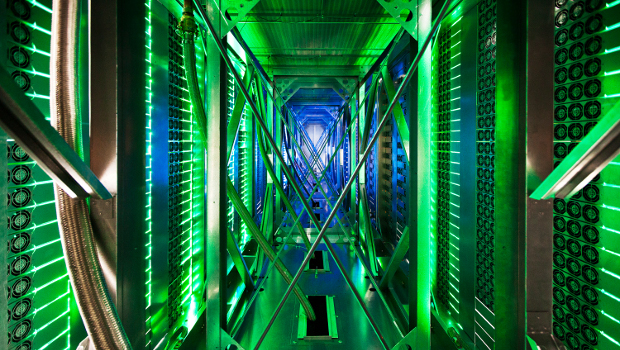Computer scientists from Trinity College Dublin and IBM Dublin have developed a system that can implement an organisation’s preference for cloud resource consumption.
The new system called Stratus can, for example, be configured to ensure that an organisation’s cloud system only consumes ‘green’ power from renewable resources such as wind, or in times of high demand can be tuned for ultimate performance.
Stratus uses mathematical algorithms that can balance loads between different computer servers located across the globe, to take advantage of compute facilities that are powered by cheap or green sources, potentially reducing costs, or carbon footprint, or a balance of both.
Organisations that host services in the cloud need to buy sufficient capacity to meet demand, but can choose where in the world they want their servers to be located and can even specify this on an hourly basis. Stratus allows an organisation to set out how much importance they attach to cost, greenhouse gas emissions and network delays involved in servicing their internet load. The algorithms then work out how best to split the load across different cloud-computing facilities to achieve the ‘best’ result.
“The overall goal of the Stratus system is to allow companies to procure their cloud computing service in a way that best serves their priorities,” said Donal O’Mahony, Professor in Computer Science at Trinity. “If they want to be super-green, it will shift the load one way. If they want to cut costs to the bone, it will shift it another way, or they can choose anything in between.”
The Stratus system was tested by creating a simulation based on three large facilities located at California, Virginia and Dublin. These locations were chosen because they mirrored where Amazon Web Services, one of the largest cloud providers, has three of their major service centres. Some data centres used state-of-the-art cooling techniques and some did not. Real-time local wholesale prices for electricity were used where available. The team also conducted a study on network delays between various parts of the internet and the three facilities.
In the simulations, the scientists found that by tailoring the algorithms to reduce carbon output, they could achieve a 21% reduction in the greenhouse gas emissions associated with the given load. Likewise, by targeting electricity cost reductions, they could achieve a 61% saving over simply splitting the load evenly. By assigning weighting to each factor, the load could be spread to fully reflect individual preferences.
“We know there are imperfections in the data we have for each of these three regions, but what is important is that our algorithms will respond in real-time to deliver on the companies’ objectives,” said Joseph Doyle, one of the scientists who designed the simulation.
“This is a nice example of how mathematical optimisation, control theory and computer science can come together to deliver significant environmental benefits,” said Robert Shorten, Optimisation Researcher, IBM Research.
TechCentral Reporters







Subscribers 0
Fans 0
Followers 0
Followers